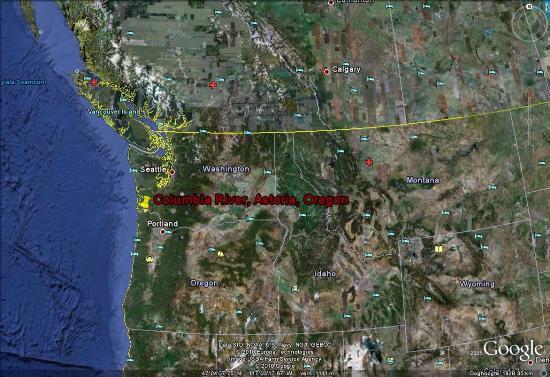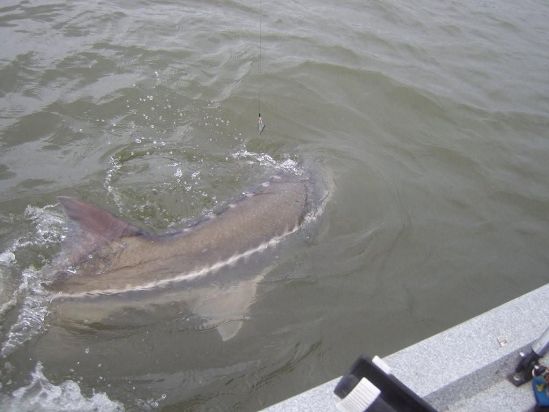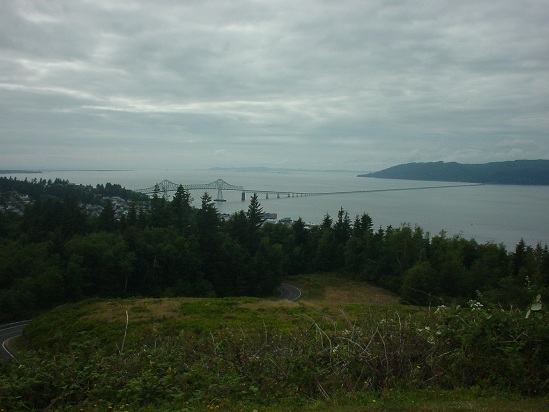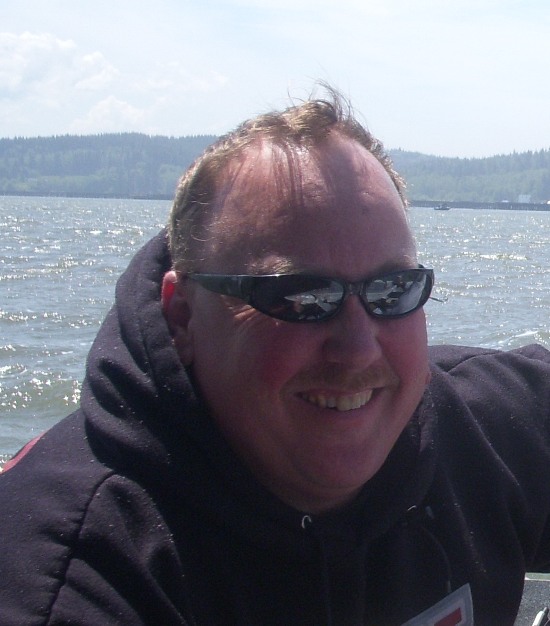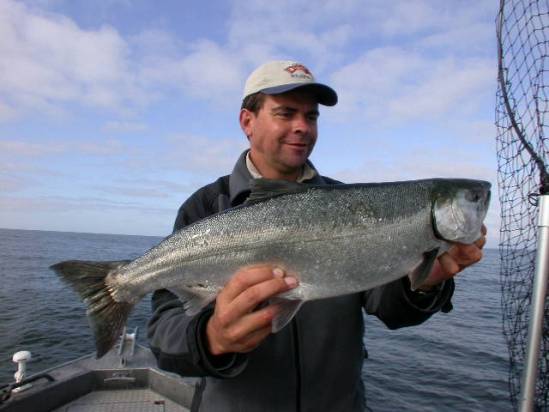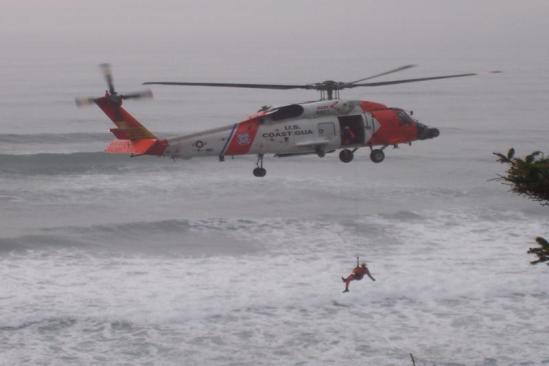Sturgeon and salmon, Columbia river (part 1)
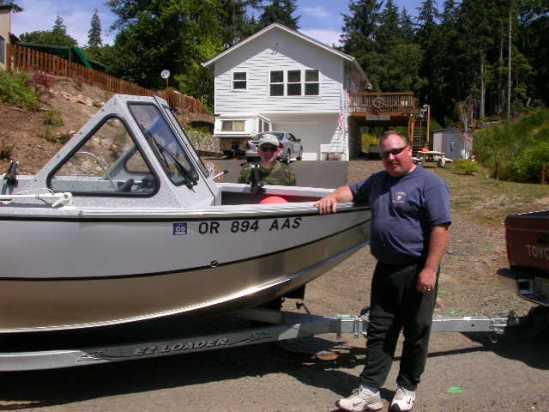
Greetings! My name is Dale Murff and I live in the northwest corner of Oregon, on the pacific coast. Over the next few weeks / months, I will be sharing some of my experiences, thoughts and ideas of fishing the waters of the lower Columbia River and Pacific Ocean near the Oregon coast and surrounding areas. It is my hope that you will find some value /interest in the content of my writings.
I would like to thank my good friend and much respected angler, John Smit, for the opportunity to share my views with you and some insight on some of the fishing opportunities, management efforts, and general information on some of the fishing history and opportunities this part of the world has to offer! I have had the pleasure of fishing with John on many occasions in the pacific northwest of the U.S. as well as some of John’s local waters in the Nederland’s.
I have been fishing this area for nearly 40 years, however only the past 15 years have I been as focused and dedicated to the Columbia River Estuary and other nearby waterways. In the spring of 1996, I was invited on a guided Sturgeon fishing trip to the Astoria area for white sturgeon. I had never before fished for these impressive fighters and really did not know what to expect. All my prior fishing experiences were targeted towards, various varieties of trout, salmon, steelhead, rock fish and some warm water species such as bass, crappy, blue gill and catfish.
We launched early in the morning on this spring day, and made about a two mile run from the boat landing, down river towards the mouth of the Columbia River. The first stop, we anchored up in a mere 4 feet of water and the guide (Andy Betnar) begin describing what to look for in a bite, and the technique of hooking, fighting a fish. Fifteen minutes into the trip, the tip of my pole began dancing, Andy began shouting “there’s a bite –get it – get it – get it”. I snatched the pole from the rod holder and felt the fish still tugging at the other end when I gave a vigorous hook set. It was a solid set and the line began screaming off the spool, as this fish would make its first run.
Materials:
We are using lighter gear, equivalent to steelhead fishing. 8’-6” pole w/ medium action, 30 lb test monofilament, 50 lb nylon braided leader, sliding sinker with a 4 oz pyramid lead and a live sand shrimp threaded onto a # 2 barbless hook.
The line was stripping from the spool as the fish continued its initial run, when the fish broke water it did an impressive tail walk over the water, giving us the first glimpse at this respective specimen. WOW…. – I was that quickly addicted to this new species / new style and type of fishing.
After 15-20 minutes we landed this beautiful creature, 59-1/2” long, 85 lbs. I was hooked on this fishery. We caught several more fish this day, and I was left at the end of the day wondering whether it could possibly be like we experienced, all the time and why I had not heard of or experienced this before!
A few weeks later, I purchased a 16 ft aluminum boat (barely adequate for the fury of what the Columbia can produce in the way of rough water). I spent the next several years taking notes, logging journals of tides, hot bites, weather, barometer, water temperatures, waterways and anything I felt might contribute to my understanding or pattern of these impressive fish.
The Columbia River at Astoria is over 4 miles wide. Close by up stream and down stream it can exceed 7 miles wide- a very large value of water flowing at up to 6 mph, meeting the Pacific Ocean pushing back. This can create a great torrent of waves, currents and water conditions that demand respect. It is called the “graveyard of the pacific” – many ships have been lost crossing this arguably the worst bar crossing on the planet.
There are three channels in the Astoria area – the main shipping channel on the Oregon side for shipping lanes, varies from 40 ft to 140 ft deep. There is a shallower channel on the Washington state side, which runs from 20 ft to 60 feet deep (not adequate for large seagoing ships). Then a still shallower channel runs through the center of the river, 10 – 30 ft deep. There are sand bars that are spread through the river between these channels that are exposed during low tides, yet covered at high tide, making navigation a challenge even for the most knowledgeable mariner. Even the most elaborate electronics are not entirely accurate of the contours and depths in this area as it is ever changing.
My friend John Smit can contest to these sandbar’s existing, and how fast this water can disappear from under you as one summer day I must admit, I fell victim to spending hours on a sandbar with John, waiting for the flood tide to make us mobile again so we could continue our fishing trip. You may find yourself in twenty feet of water and within five to ten feet you can be in 1 ft of water with no warning visible.
Don’t let me set the wrong view of this area, it can be pristine and calm, very relaxing and beautiful. But it also can change as the wind and tides in combination can develop quickly so one must be aware of the conditions, and be prepared to deal with these changes through out the day!
There are several techniques, species, and areas to fish in the surrounding area, but my focus of discussion will be on sturgeon, salmon and my experiences, rules, regulations and management of these fisheries in the Columbia and nearby waterways.
Astoria is a town built on the fishing industry dating back to the 1700’s. It is marked in history as the end of the trail for the Lewis and Clark expedition from St. Lewis Missouri to the Pacific Ocean. The river was normally choked full of salmon in those times – no one paid much attention to the existence of sturgeon until more recently in the 1980’s and 1990’s when is popularity spiked dramatically, and sport fishing became more popular competing with the commercial fisheries.
About 8 years ago, I upgraded to a larger, more sea worthy boat, and obtained training at a local college for my coast guard license to allow me to guide on these waters.
In my next article, I will be speaking to the regulations, seasons, licenses, management tools, and status of the species and some obstacles that are affecting its population.
Cheers,
Dale

